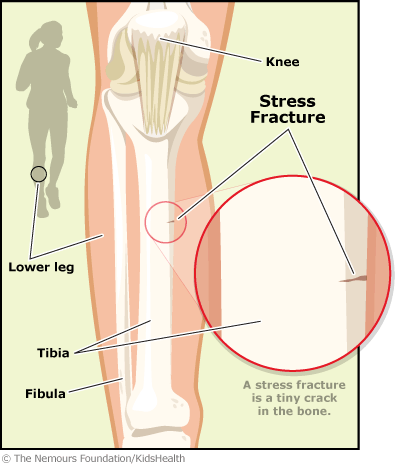Part 3 of these mini series of Chronic Leg pain in athletes based on this research article, Chronic Leg Pain in Athletes.
Stress Fractures-
Stress fractures come from repetitive microtrauma to the bone. In the lower extremity, the most common bone for a stress fracture is the tibia, it may be in other bones depending on the activity. Runners tend to have a higher rate in the area of the tibia closer to the ankle while volleyball and basketball players get it closer to the knee.
Individuals that are at a higher risk of developing a stress fracture are those that have a history of eating disorders, menstrual irregularities, or previous stress fractures. The pain is usually described as a pain that doesn’t have a particular starting event or day and seems to creep up slowly in a specific area of the bone. This pain gets worse when weight bearing activities are being done, but gets better with rest.
Most stress fractures are able to be managed with non- operative options. These options include rest, pain relief and modification of risk factors. In addition to the risk factors noted above, the limb and foot alignment need to be evaluated as well as muscle tone and limb length discrepancies which should be addressed in managing the stress fracture. Management will also include limiting weight bearing activities, limited and reduced to the point that pain is no longer being experienced. Progressing back to play is guided by pain and a full recovery can take 8 - 16 weeks.


